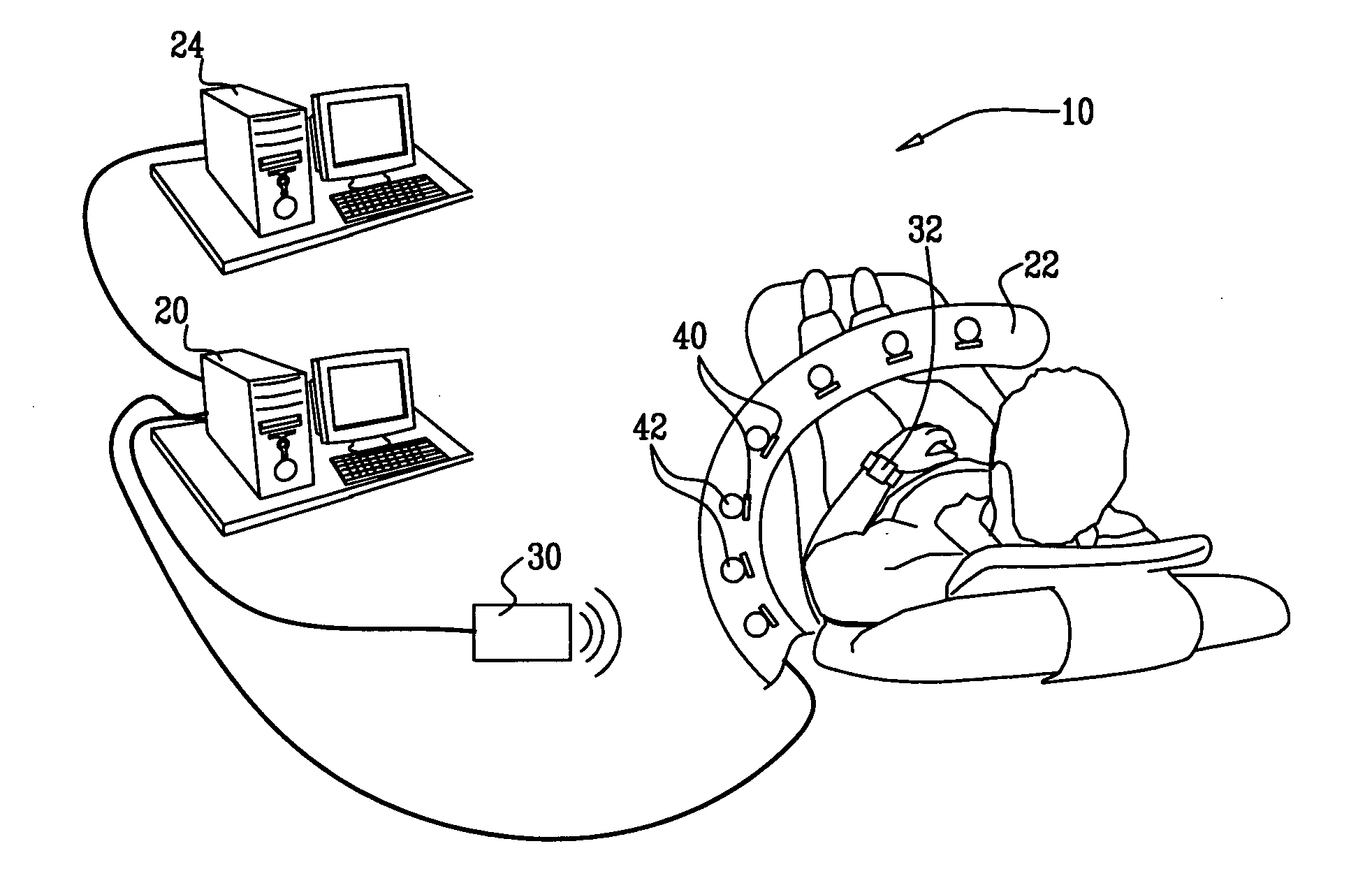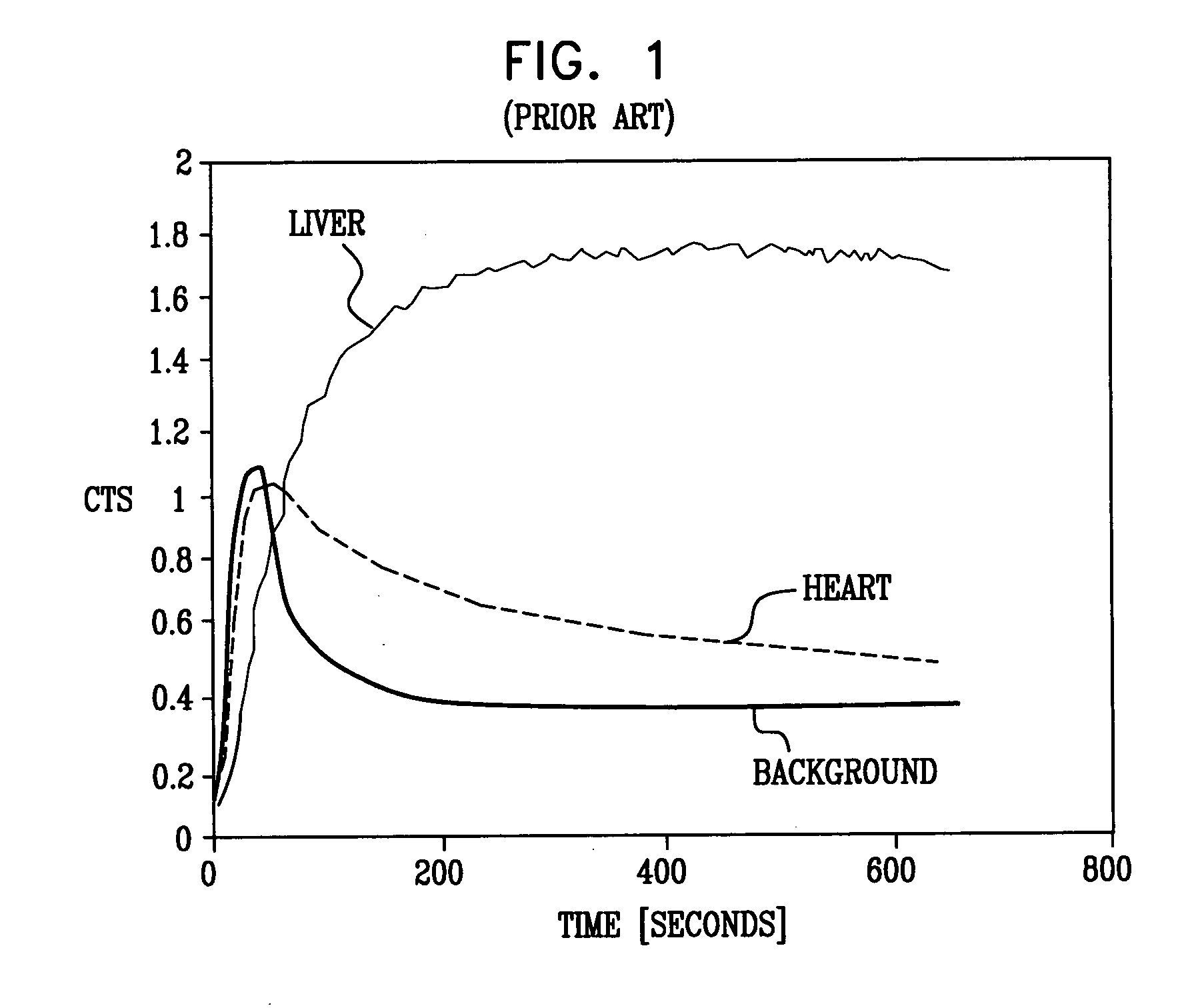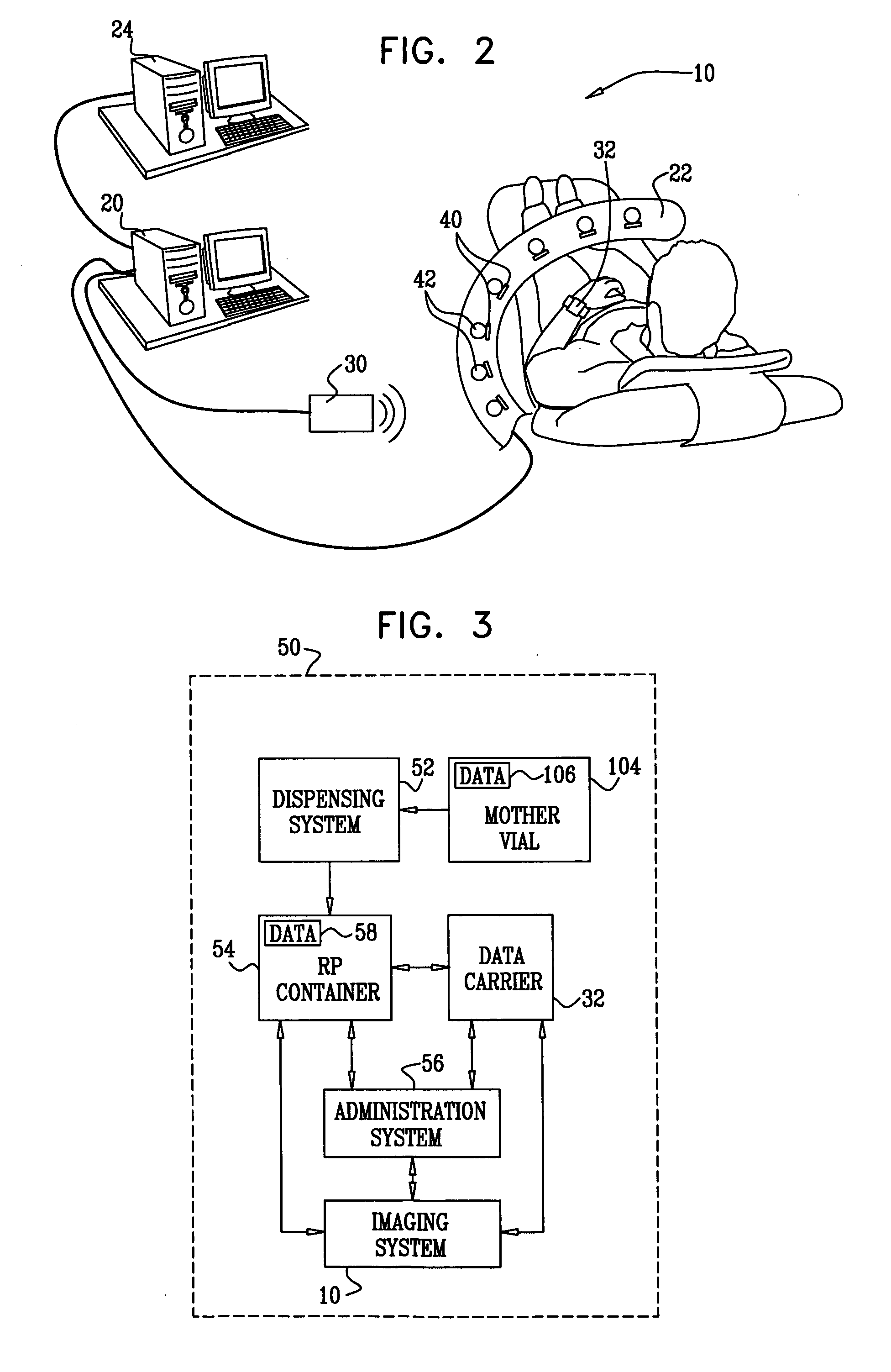Radioimaging applications of and novel formulations of teboroxime
a radioimaging and teboroxime technology, applied in the field of radioimaging applications of teboroxime, can solve the problems that conventional spect imaging systems have not been able to produce such clinically-valueable results
- Summary
- Abstract
- Description
- Claims
- Application Information
AI Technical Summary
Benefits of technology
Problems solved by technology
Method used
Image
Examples
example 1
99mTc (chlorine)(dimethyl glyoxime)3 methoxy boron and 99mTc (chlorine)(dimethyl glyoxime)3 hydroxy boron
[0688]Into a 5 ml siliconized serum vial are measured 5.0 mg of dimethyl glyoxime, 0.5 ml of methanol, 2.0 mg of boric acid and 0.5 mg of stannous chloride in 5 μl of concentrated hydrochloric acid.
[0689]Sodium pertechnetate* in physiological saline (0.2 ml) is added to the vial which is then heated at 140° C. for 30 minutes yielding 6%** of the 99mTc (chlorine)(dimethyl glyoxime)3 methoxy boron as determined by HPLC (high pressure liquid chromatography). The reaction also yields 99mTc (chlorine)(dimethyl glyoxime)3 hydroxy boron. The complexes are separated by HPLC.
example 2
99mTc (chlorine)(dimethyl glyoxime)3 ethoxy boron and 99mTc (chlorine)(dimethyl glyoxime)3 hydroxy boron
[0690]Into a 5 ml siliconized vial are measured 2.0 mg of dimethyl glyoxime in 0.2 ml of ethanol, 2.0 mg of boric acid, 10 mg of citric acid in 0.1 ml of water, 100 mg of sodium chloride, 1.0 mg of diethylenetetramine pentaacetic acid, and approximately 50-60 μg of anhydrous stannous chloride in 1 μl of concentrated hydrochloric acid.
[0691]Sodium pertechnetate in physiological saline (0.5 ml) is added to the vial which is then heated at 100° C. for 5 minutes yielding 4-5% of 99mTc (chlorine)(dimethyl glyoxime)3 ethoxy boron. The reaction also yields 99mTc (chlorine)(dimethyl glyoxime)3 hydroxy boron. The complexes are separated by HPLC.
example 3
99mTc (chlorine)(dimethyl glyoxime)3 propyloxy boron and 99 mTc (chlorine)(dimethyl glyoxime)3-hydroxy boron
[0692]Following the procedure of example 1, but substituting n-propanol for methanol, yields 99mTc (chlorine)(dimethyl glyoxime)3 ethoxy boron. The reaction also yields 99mTc (chlorine)(dimethyl glyoxime)3 hydroxy boron. The complexes are separated by HPLC.
PUM
 Login to View More
Login to View More Abstract
Description
Claims
Application Information
 Login to View More
Login to View More - R&D
- Intellectual Property
- Life Sciences
- Materials
- Tech Scout
- Unparalleled Data Quality
- Higher Quality Content
- 60% Fewer Hallucinations
Browse by: Latest US Patents, China's latest patents, Technical Efficacy Thesaurus, Application Domain, Technology Topic, Popular Technical Reports.
© 2025 PatSnap. All rights reserved.Legal|Privacy policy|Modern Slavery Act Transparency Statement|Sitemap|About US| Contact US: help@patsnap.com



